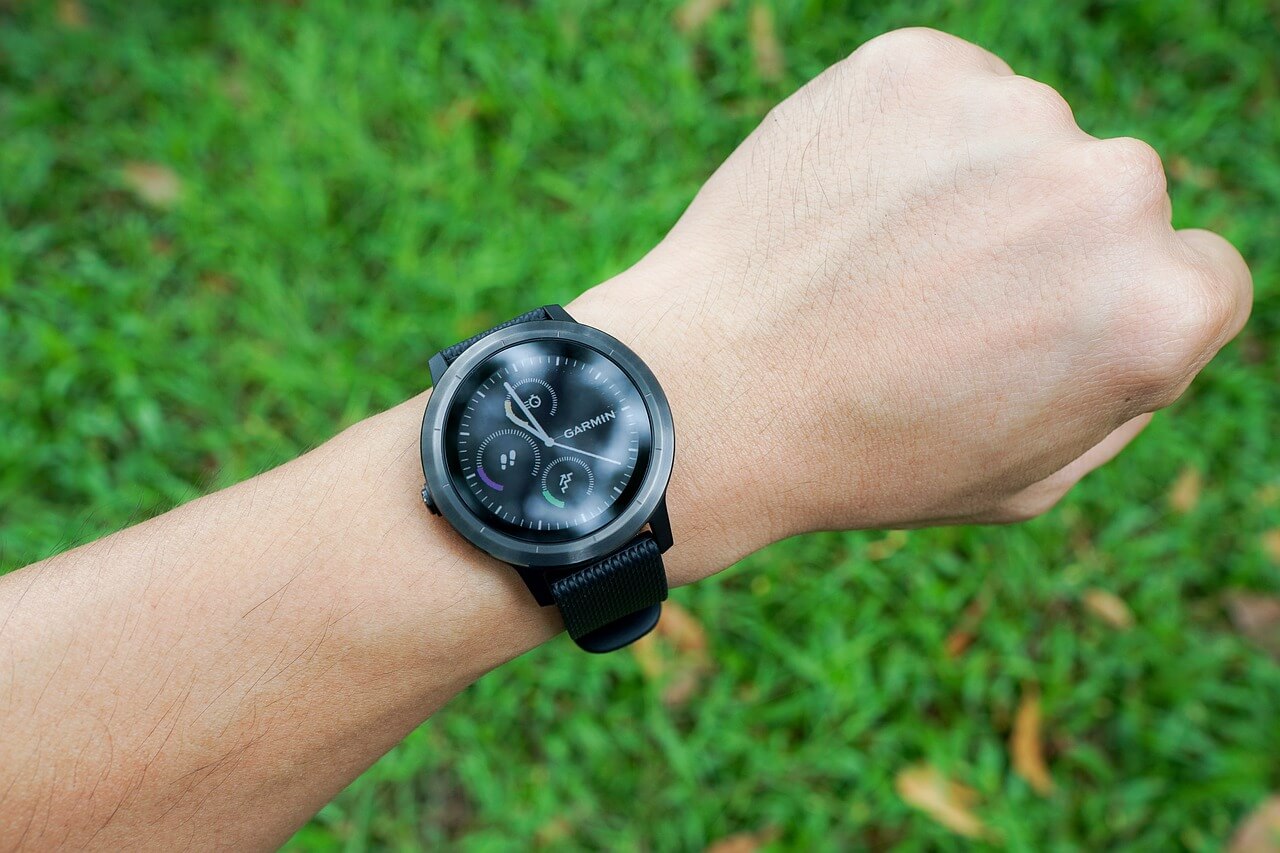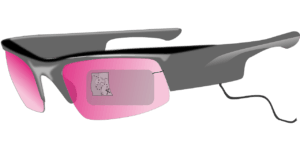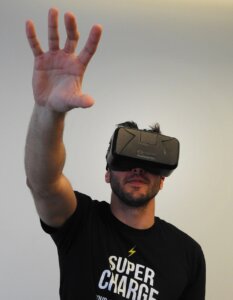After reading this article, you’ll:
- Grasp the current landscape of wearable technology, including various device types and the growing market opportunities for innovative wearable apps.
- Understand the unique challenges and considerations in wearable app development, such as design constraints, battery life limitations, and cross-platform compatibility issues.
- Learn about the technical aspects of creating wearable apps, including platform-specific SDKs, optimizing for glanceable interfaces, and managing data synchronization between devices.

Wearable technology has become increasingly popular in recent years, with smartwatches, fitness trackers, smart glasses, and other connected devices now commonplace. It is estimated that global shipments of wearable devices will grow from 533 million units in 2021 to nearly 612 million units in 2028. As adoption of wearables grows, so does the opportunity for innovative wearable apps that leverage the unique capabilities of these always-on, body-worn gadgets.
Wearable apps provide a means of delivering timely, glanceable information, convenient controls, and hands-free functionality by utilizing a wearable device’s sensors, input methods, and connection to the smartphone. Well-designed wearable apps that complement the device form factor can provide significant value for users across domains like health and fitness, communication, productivity, and more. With the maturity of wearable platforms from Apple, Google, and others, it is now easier than ever for developers to build cross-platform wearable apps using native SDKs and tools.
As wearables become increasingly integrated into consumers’ digital lifestyles, developing compelling wearable apps provides an exciting opportunity for businesses looking to engage users in new ways. This article will provide an overview of the wearable app development landscape, including the challenges, considerations, and best practices for crafting successful wearable experiences.
Types of Wearable Devices
 There are several categories of wearable devices that are designed to be worn comfortably on the body throughout daily activities. Each wearable type has unique capabilities and use cases for users.
There are several categories of wearable devices that are designed to be worn comfortably on the body throughout daily activities. Each wearable type has unique capabilities and use cases for users.
Smartwatches are wrist-worn devices that act as companions to smartphones, offering glanceable information, notifications, tracking features, and more. Leading smartwatch platforms include Apple Watch, Wear OS, Tizen, and Fitbit OS. Fitness trackers are wearables specifically focused on health and activity tracking, monitoring metrics like steps, heart rate, sleep patterns, and more. Popular fitness tracker brands include Fitbit, Garmin, and Xiaomi.
Smart glasses present data visually through transparent displays or projections. They allow hands-free access to information and notifications. Google Glass and Microsoft HoloLens are two leading examples. Smart clothing refers to apparel and accessories that incorporate sensors and technology to capture biometrics and other data from the wearer.
Finally, medical wearables are regulated medical devices designed for health monitoring and diagnosis. These include continuous glucose monitors, ECG monitors, wearable patches and more. The variety of wearable categories demonstrates the expansive capabilities and opportunities these always-on, body-worn devices present.
Opportunities in Wearable App Development
 Wearable devices present a multitude of exciting opportunities for developers to build engaging, valuable apps and experiences. As wearables gain mainstream adoption, there is an expanding market of active users looking for apps that leverage wearables’ unique capabilities.
Wearable devices present a multitude of exciting opportunities for developers to build engaging, valuable apps and experiences. As wearables gain mainstream adoption, there is an expanding market of active users looking for apps that leverage wearables’ unique capabilities.
A key opportunity lies in integrating wearables with IoT devices and smart home platforms through companion apps. Wearables can enable convenient home controls and automation thanks to their position on the user’s body throughout daily activities. Fitness trackers and smartwatches also allow developers to tap into specialized health tracking sensors, empowering innovative wellness experiences.
Additionally, the very nature of wearables being body-worn provides the chance to explore new interaction paradigms and experiential apps utilizing glanceable interfaces, haptics, audio, and more. Wearables will enable apps that are deeply personalized, contextually relevant, and frictionless.
Finally, all these opportunities open up new potential revenue streams for developer businesses. From freemium fitness apps with premium subscriptions to enterprise applications that increase workplace productivity, there is no shortage of monetization models for compelling wearable experiences.
With their continuous connectivity and wide variety of onboard sensors, wearables provide a foundation for developers to build the next generation of engaging apps and digitally connected services for daily life.
Challenges in Wearable App Development
While wearables provide many opportunities for innovation, designing apps for these devices also poses some unique challenges that developers need to address.
The compact form factor of wearables limits the screen size and available modes of input compared to mobile devices. This constrains the UI/UX design and can impact usability. Wearables also have very strict battery life constraints due to the smaller batteries required for comfortable body-worn devices.
Additionally, because wearables capture sensitive health metrics and personal data, data privacy and security is a major concern. Developers need to ensure proper permissions and encryption are implemented to protect user data.
The diversity of wearable devices in terms of display types, resolutions, sensors and form factors also poses challenges for developers looking to build apps that work seamlessly across multiple platforms.
Finally, delivering a unified and complementary experience across a wearable device and its connected smartphone app requires careful coordination between the two application halves. Notifications, data syncing, connectivity protocols and user flows need to be designed holistically.
While challenging, overcoming these constraints and obstacles allows developers to craft highly-optimized wearable experiences that feel almost magical to users. Addressing the unique considerations of wearables upfront enables apps that truly enhance interactions between users and technology.
Key Considerations for Wearable App Design
Crafting apps for wearables requires focusing on several key elements to create optimized experiences for users on the go. Taking into account the wearable’s usage context and hardware constraints should inform the app design philosophy.
Most importantly, user interfaces must be extremely minimalist, only presenting the most necessary, high-value information and controls. Every pixel is precious, so screen real estate efficiency is critical. This ties into optimizing content to be glanceable and quickly digestible for users actively engaged in other tasks.
Additionally, wearable input mechanisms tend to rely more heavily on voice commands, gestures and contextual cues compared to typing. Developers should leverage these hands-free modes of interaction when appropriate to enable frictionless user experiences.
Creating flexible layouts and UIs that can adapt across different wearable display shapes, sizes, and resolutions is also important for supporting cross-device functionality. Users expect their apps to work consistently across multiple wearables.
By focusing on lightweight, glanceable, and hands-free interfaces, developers can craft wearable apps that feel like a natural extension of the user rather than an impediment. The user experience should fade to the background, enabling frictionless interactions.
Technical Aspects of Wearable App Development
Creating fully-featured wearable apps requires diving into the technical considerations across popular wearable platforms and leveraging specialized development tools.
Key wearable operating systems like Apple’s watchOS, Google’s Wear OS, Samsung’s Tizen, and Fitbit OS each have native SDKs, UI libraries, design guidelines, and more for building compatible wearable apps. Developers need to familiarize themselves with these platforms.
These OS-specific SDKs provide access to the wearable hardware like sensors and wrist-based input while handling communication with connected smartphones. Developers should optimize data processing and battery consumption for peak performance.
Carefully managing the synchronization of data between the wearable and its companion smartphone app is also critical for a seamless user experience. This includes bi-directional syncing of preferences, settings, and collected data.
Additionally, wearable apps require specialized handling of notifications, tailoring them to quickly glanceable formats and allowing context-based actions.
By leveraging the available development tools and optimizations for each wearable platform, developers can build fast, reliable, and power-efficient wearable apps that delight users. The technical considerations help translate high-level wearable user experiences into reality.
Frequently Asked Questions (FAQs) on Wearable App Development
Q: What are the main types of wearable devices?
A: The main types of wearable devices include smartwatches, fitness trackers, smart glasses, smart clothing, and medical wearables. Each type has unique capabilities and use cases, ranging from general-purpose smartwatches to specialized health monitoring devices.
Q; What are the biggest challenges in developing wearable apps?
A: The main challenges in wearable app development include designing for small screen sizes, optimizing for limited battery life, ensuring data privacy and security, adapting to diverse device types and form factors, and creating a seamless experience between the wearable device and its companion smartphone app.
Q: How do wearable apps differ from traditional mobile apps?
A: Wearable apps differ from traditional mobile apps in several ways. They focus on providing glanceable, quickly digestible information, rely more on voice commands and gestures for input, and are designed for briefer interactions. Wearable apps also need to be more context-aware and optimize for the limited processing power and battery life of wearable devices.
Q: What opportunities does wearable technology present for app developers?
A: Wearable technology offers numerous opportunities for app developers, including integrating with IoT and smart home devices, creating innovative health and fitness tracking experiences, exploring new interaction paradigms, and developing enterprise applications to increase workplace productivity. These opportunities also open up new potential revenue streams for developers.
Q: What are some key considerations for designing a wearable app interface?
A: When designing a wearable app interface, key considerations include creating a minimalist design that presents only the most necessary information, optimizing content to be glanceable, leveraging voice commands and gestures for input, and designing flexible layouts that can adapt to different wearable display shapes and sizes. The goal is to create an interface that feels like a natural extension of the user rather than an impediment.





